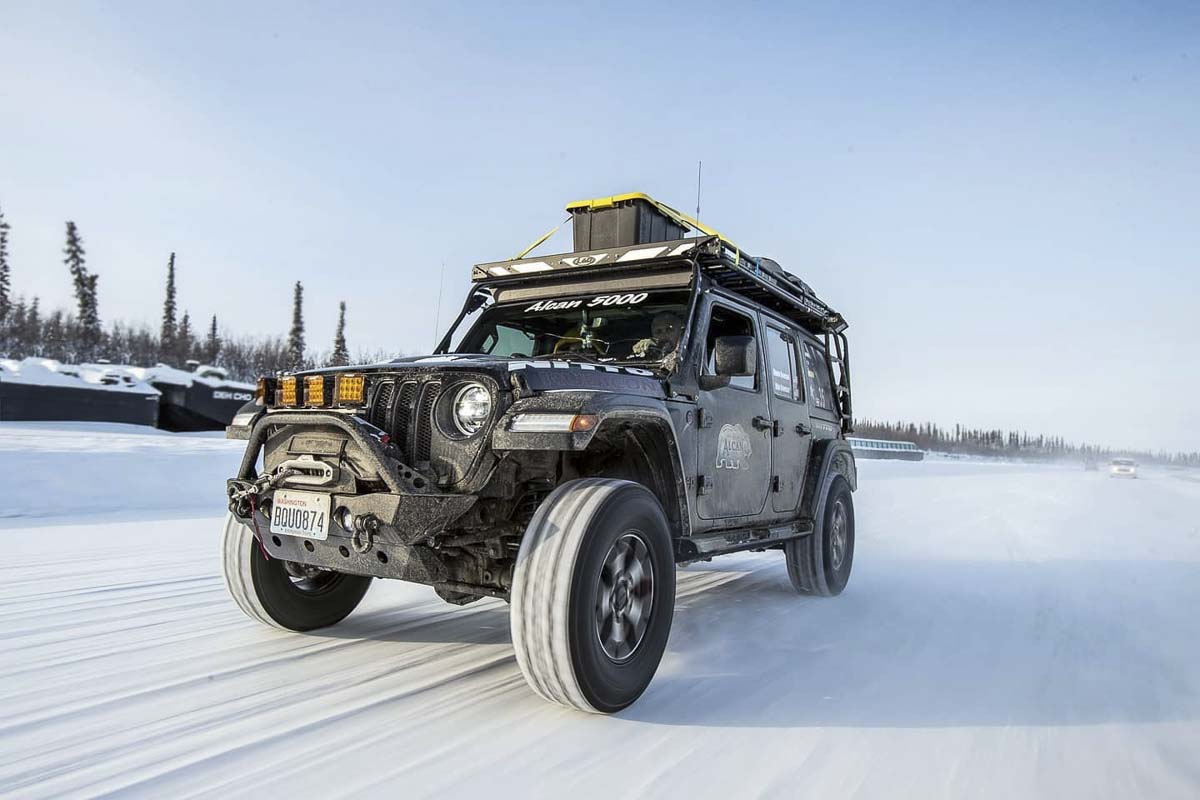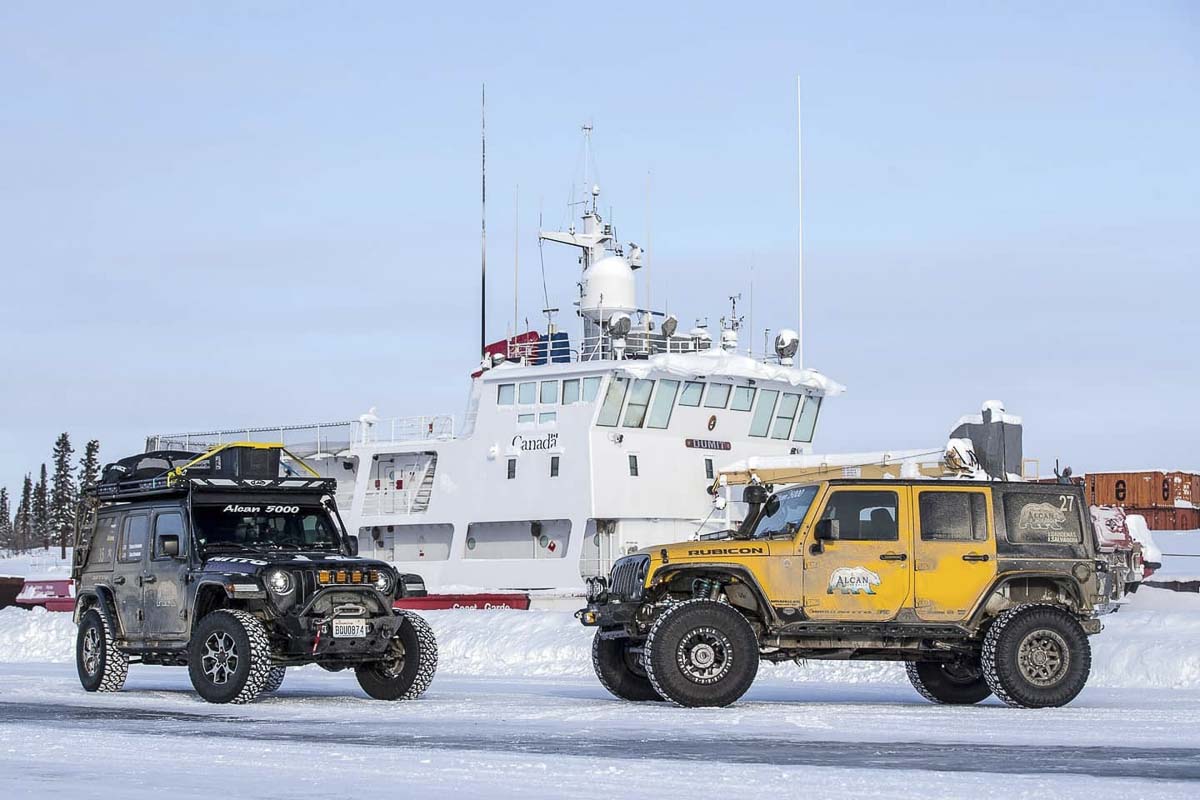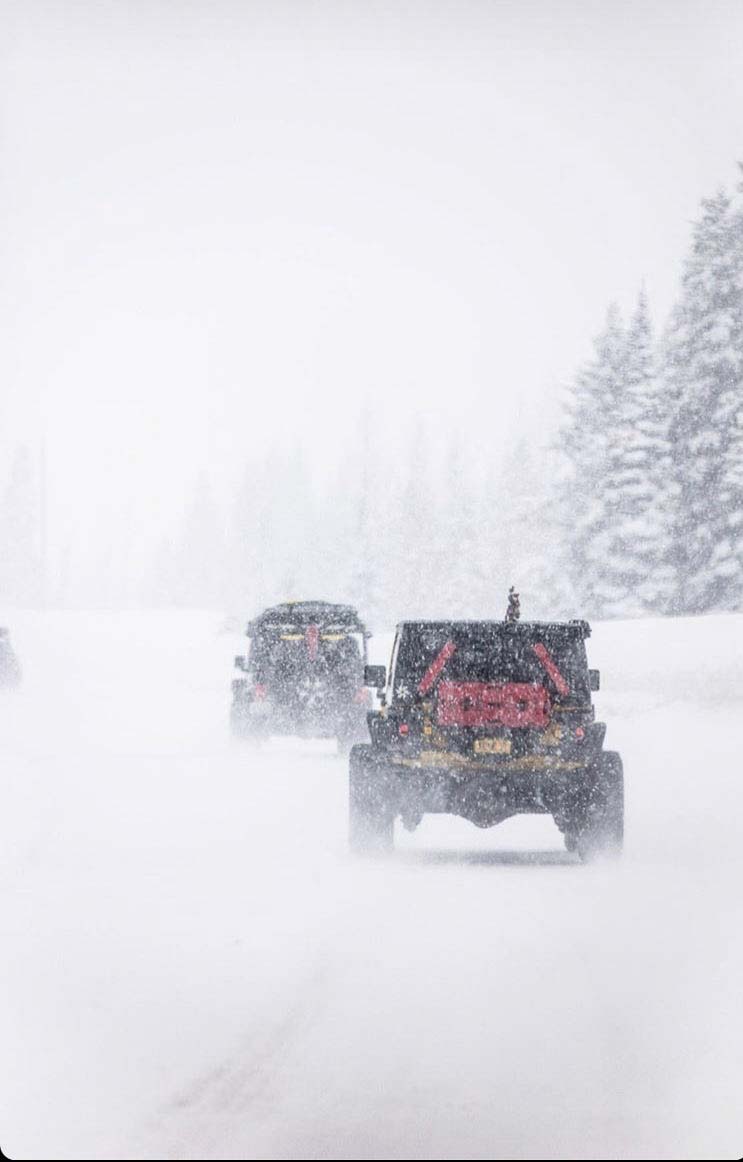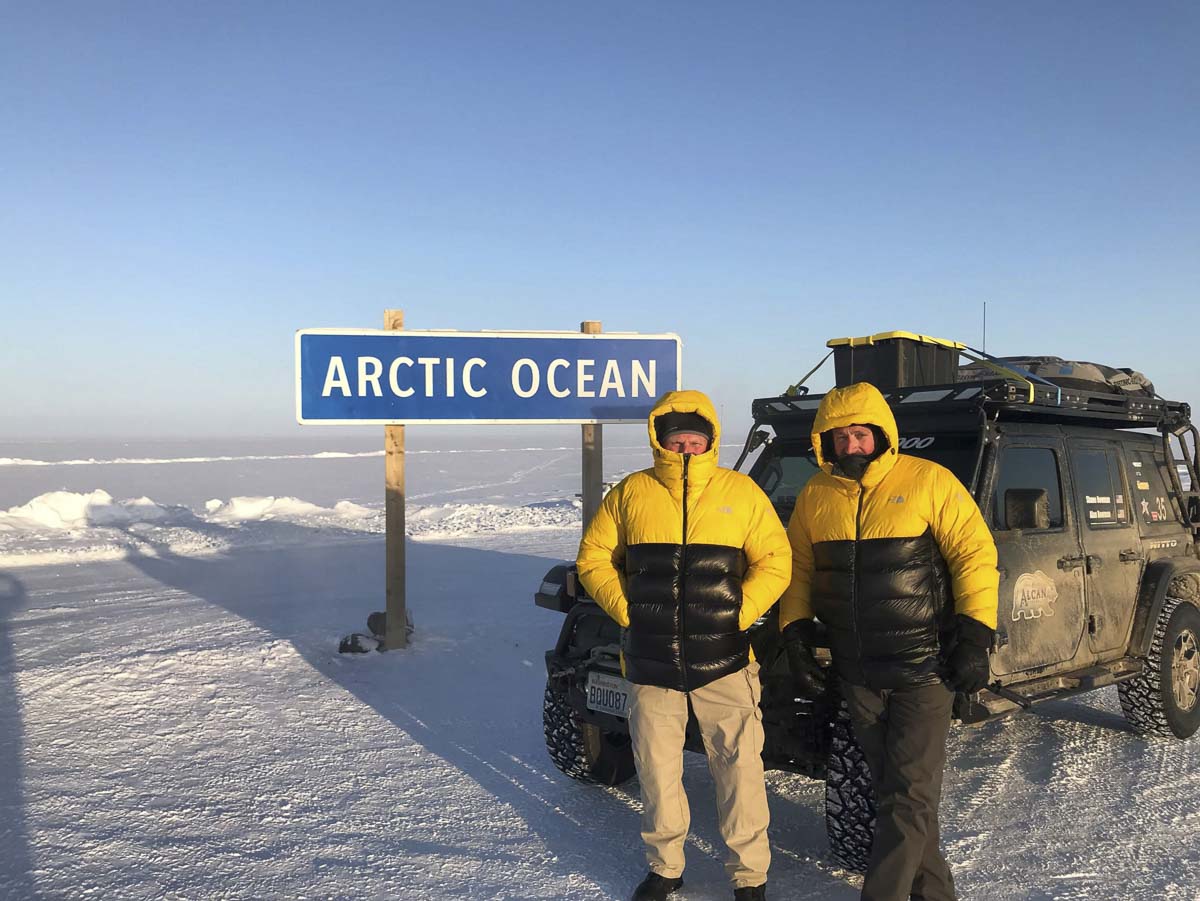The 5,000-plus mile trek goes from Kirkland to the Arctic Ocean, then back to Anchorage in the coldest part of Winter
BATTLE GROUND — When Alan Bowman beat cancer for the third time last year, he didn’t really think about celebrating.
Let alone going on a 5,120-mile trek from Seattle to the Arctic Ocean, then back to Anchorage, Alaska.
But that was just the proposal his son, Shane, brought to him.
“I kinda wondered if he hadn’t been smoking wacky weed,” Alan laughs.

Shane Bowman, who you might recognize from his position as a Battle Ground City Council member, says he’d been intrigued by the idea of the Alcan 5000 for a while.
“It was a couple years ago, I saw a vehicle coming down the highway … and it was just, you know, dirty as heck and it had Alcan 5000 on it,” Shane recalls. “And I’m like, ‘what the heck is that?’ So I looked it up.”
Shane says he signed up for a waiting list, figuring maybe they wouldn’t even get to go.
Meanwhile, he worked to convince his father, who was fresh off of beating stage 4 prostate cancer, that this was something worth taking on.
“I knew I could talk him into it,” Shane says, smiling.
But it took a little doing.
“I thought ‘Nah, I don’t think so,’” the elder Bowman says, before admitting it didn’t take long to wear him down. “He talked about bucket lists and I’m thinking, ‘I’m not even sure that’s on my bucket list,’ but I always wanted to go to Alaska … and I wanted to see the northern lights.”
The pair didn’t know they’d actually be going until late Summer, when they learned enough people had dropped off the waiting list.
Then came another twist.
“(We) found out (that we got accepted) right after I found out my wife was pregnant,” Shane says. “And that kind of threw a wrench in it.”
The news came on a vacation to Hawaii, and Shane says they figured at that time the baby was likely not due until March, when they would already be back home.
“We got back from Hawaii and accepted going to the Alcan, and sent in our registration,” Bowman says, “and found out she was due February 28. And that was three days after we left.”
Luckily, the little girl arrived a couple of weeks early, so Bowman got to be there for the birth before leaving on the journey of a lifetime.
“I don’t know why, but something just really stuck out to stand on the Arctic Ocean,” Shane says of his reason for wanting to go. “It was like, there’s not a lot of people that, you know, outside of people who live up there, that can say, ‘I stood on top of the Arctic Ocean.’”
To get there required a week of hard driving, including a few nerve-wracking stretches.
The Alcan 5000 is a point-based rally, with nine competitive legs and various classes. Thirty-nine vehicles took part this year, with 82 men and women. Only one vehicle ended up having to be towed over the finish line.
But that didn’t mean there weren’t a fair share of breakdowns, chipped windshields, and even a crumpled bumper or two.
“When we went up to Dempster, you had 480 miles of snow over dirt and rock, and just enough room for two rigs to get by,” Alan recalls. “Our main traffic in that area was tankers going one way or another, and it was their road, so you just kind of got out of the way. And sometimes it made you feel like you were going to be run off the road.”

Facing nighttime temperatures that often got to 50 or 60 degrees below zero (Fahrenheit), vehicles in the race need to be outfitted with special equipment designed to keep fuel lines from freezing up, or any number of other malfunctions that can occur in such frigid conditions.
Shane and Alan, both former Eagle Scouts, admit their Jeep Rubicon was maybe a bit over-prepared for the journey. But they were glad for the added security.
“I never felt like there was anything that was going to happen or could happen that we weren’t prepared for,” says Shane. “We took everything except for the fenders, that were plastic, off because we were concerned about the cold weather. We wanted to make sure that we had some really heavy duty stuff.”
That included a first-of-its-kind roof rack from LoD Offroad, Nitto Tires, and lights on the front and back. The rear lights are used in white-out conditions to allow vehicles to see the driver ahead of them so they don’t wander off into the wilderness.
Along the way, radios squawk with drivers in communication. Even in a competition such as this, people are often willing to stop and help someone who gets into a predicament.
Despite the treacherous terrain and rugged conditions, the Alcan 5000 has historically been an incredibly safe race. Both because of the intense preparations that go into it, but also because people help each other out.
Shane says in Dawson City, their teammate, who was from New York, had some problems, and they got to experience the challenges of fixing an engine in “only” 16 degrees … below zero.
“It was amazing to me. You just couldn’t work on anything because you can’t wear the bulky gloves that you need to keep your hands warm and still be able to screw a bolt into an engine block,” he says. “We took turns and really came together.”
In many ways, that’s the theme of the Alcan 5000 race. Just getting through it together, and having a good time.
And it’s not just the rally participants who help out. Both men said they experienced several times where strangers would appear from seemingly out of nowhere to lend a helping hand.
“When we had one of the breakdowns on our friend’s Jeep, we were parked out there working on this thing in the snow,” Alan recalls. “And a neighbor lady comes up and says, ‘you guys okay? Is there anything we can do?”
“I don’t know where she came from,” Shane added. “She just came like, out of the woods … I’m like, ‘where’d you come from?’”
“She said something that really impressed me,” Alan adds. “‘We take care of each other up here. We’re all family because you got to help each other to survive.’ That impressed me.”

In Dawson City, while dealing with a breakdown, two drunk men came stumbling out of a tavern. Noticing the trouble, they offered an unusual bit of help.
“They made the comment that, ‘well, our drug dealer, he’s in Europe,’” Shane recalls, “‘and he’s got a Jeep just like this. We could go take that part off of there.’”
The group figured they were joking, until they flagged down the owner of another Jeep like the one experiencing problems and asked if there was a place to get parts.
“And he’s like, ‘no, there’s only two of us that have Jeeps like this in town,” they said. “‘the other guy is in Europe for the winter.’”
Those salt-of-the-earth memories, Alan says, are what will stick with him most about the trip.
“The first couple days I’m thinking, I don’t know that I’m gonna last 10 days of this,” he laughs. “But it went by so fast you just kind of lost track of time.”
While Alan didn’t get to see the northern lights on this trip, he and his son did get to stand on the Arctic Ocean.
Shirts off.
At least for a tiny bit.
“It was minus 45. And Johan, my buddy that was in the yellow Jeep, I asked him to take the picture and he was stalling a little bit,” Shane laughs. “That was cool. That was freezing cold.”
The trip wrapped up in Anchorage, Alaska, in the midst of the Iditarod sled dog race.
“That was an experience to behold,” Alan says. “They call that the Super Bowl of Alaska, and I believe it. There are people from all over the world.”
Shane says he hopes the story of his dad embarking on such an arduous journey, despite being a three-time cancer survivor, will help others know that there is hope despite such setbacks.
“He’s never let it slow him down, you know, he’s still working today,” Shane says. “It’s not a destiny, you know, it’s not the end of the world, and you could still continue to do things and live your life, and have some great experiences.”
It’s also a chance, he adds, to remind people about the importance of early detection, and regular check-ups.

Despite his early misgivings, Alan says he’s glad his son talked him into the adventure.
“I’m glad I didn’t take my wife. She’d have been a train wreck,” he jokes. “But I’m glad to have been able to go on it with my son.”
Both men say the trip generated memories they’ll treasure for the rest of their lives.
“You can have money, lose money, have businesses, lose businesses,” Shane says, talking about the current COVID-19 pandemic which has left businesses closed and people out of work. “But your memories you keep, and so let’s go make some memories.”
By the way, the winner of this year’s Alcan 5000 was another Battle Ground native. Russ Kraushaar, along with his long-time racing partner Garth Ankeny of Portland, finished the race in a two-wheel drive 1973 Ford Capri.




